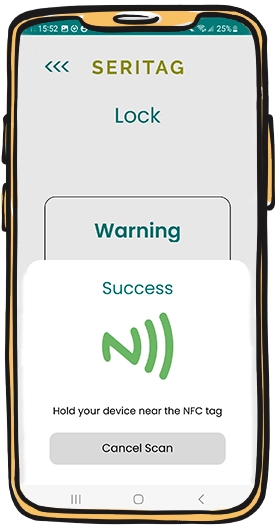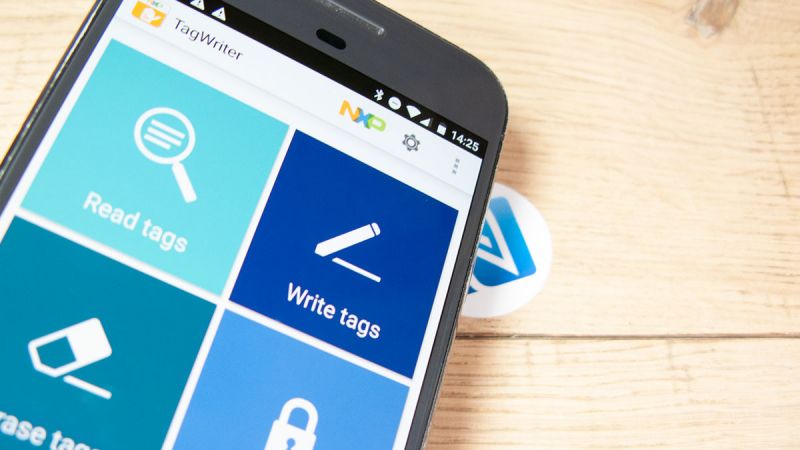
This is a step by step tutorial to help you write, or in the official NFC terminology 'encode', your first NFC tags with an Android phone. If you are using an iPhone, then check our tutorial on how to encode NFC tags with an iPhone.
If you prefer to watch a video, then just press play.
There are really two options for encoding NFC tags. Either get Seritag to encode your tags for you when you buy them or encode them yourself with a mobile phone.
Encoding tags yourself with a mobile is quick and easy. For small quantities of tags, perhaps up to a hundred or so, it can be no problem. If you are planning a large roll-out of tags and expect to be using many hundreds or thousands of NFC tags, then we'd recommend that we encode for you.
In short, almost any Android NFC enabled smartphone. You will need to download an App but the best encoding App is free, reliable and easy to use.
Encoding your tags doesn't require specialist knowledge or technical skills. You just need to know the web address you want to encode, download the App to your Android phone, tap a few buttons and then wave the phone over your tag. Done.
There's two answers here.
The first is which NFC chip do you need ? There's a detailed breakdown of the different NFC chip types on our website but to save you the read, to get started, buy yourself NFC tags with the NTAG213 chip.
Unless you plan on encoding vCard contact details (read our guide on how to encode vCards), then the NTAG213 chip will do everything you will probably need.
For the format/style of the tag, then start with plain or printed stickers. They are cheap and you can test and start encoding without worry. We'd suggest a set of plain white (or clear) 22mm to 38mm size NTAG213 NFC tags will work just fine.
We have created an NFC App that can read and write NFC tags. Our Seritag Encoder App is available to download from the Play Store. It's reliable, free and comprehensive.
Most NFC tags will not work on metal surfaces. There are tags that do, which are called 'on-metal' tags but normal NFC tags won't. So, the first thing is to make sure you haven't put your tag on a metal desk before you try to encode it !
There isn't a front and back to a normal NFC tag (there is to an on-metal NFC tag). You don't need to remove the liner if it's a sticker. Just place one on your desk.
If this is your first time encoding tags then we would suggest cutting or removing a single tag from your reel or strip and use that. This is especially important if the tags are small because some phones have a small 'hotspot' on the back of the phone.
If you have multiple small tags on a strip of tags then it can be quite easy to encode the next one rather than the one you were aiming for. It might not make much difference but it can be a little confusing when you are testing things.
First, download the Seritag Encoder App from the Play Store.
Select 'Encode' to create a new dataset to encode onto your NFC tags.
We are just going to undertake a simple encoding of a web address (URL) - 'https://seritag.com'.
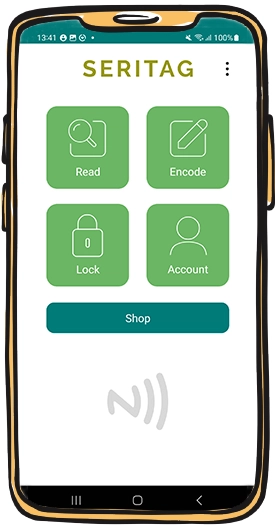
Choose between URL or Text encoding. The toggle will highlight in green which option you have chosen.
If you have chosen URL, you can pick either ‘https://’ or ‘http://’
If you have chosen text, you can enter the text you wish to encode onto the NFC tag.
For this example, we are going to encode the NFC tag with a URL to the Seritag website.
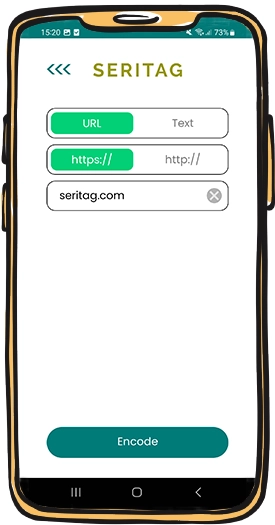
In this example, we are going to store our web address 'https://seritag.com'.
We will simply add seritag.com into the box below.
Once you have entered your URL, then tap on the ‘Encode’ button at the bottom of the screen.
Now simply hold your phone within a few centimetres of your NFC tag. Note that the 'hotspot' on an Android phone is in the middle of the back of the phone. If you wave the phone around slowly you will find it and then you will know ! The phone will respond with a sound and/or vibration when it finds the tag.
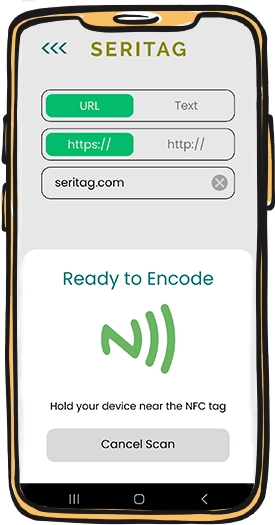
If all has gone well, you should see a ‘Success' pop up to confirm the NFC tag has been encoded. That's it - you have encoded your first NFC tag.
If you now close the App and wave your phone over the NFC tag, your Android phone will (should) automatically launch your link.
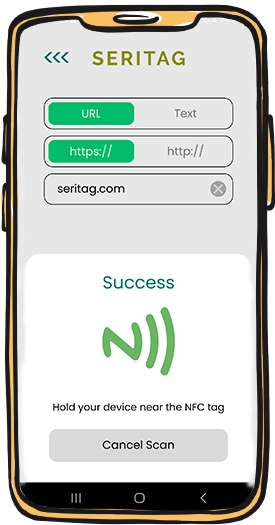
NFC tags contain a 'lock' which prevents the data that you encode on the tag being changed. Until you lock a tag, anyone can change the data. After you lock it, nobody can change the data. If you are messing about and playing with encoding then don't check this. Once the tag is locked, there's no going back. If you are using the tags in a public place, then you really do need to lock.
On the home screen of the Seritag Encoder App, click the ‘Lock’ button.

Hold your phone over the NFC tag that you want to lock.
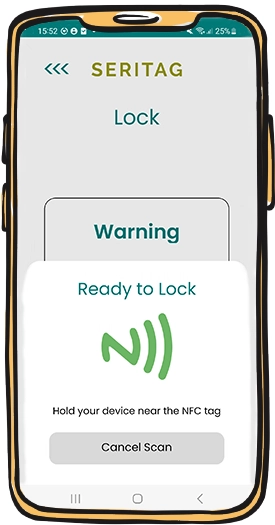
This NFC tag is now locked and cannot be re-written.
